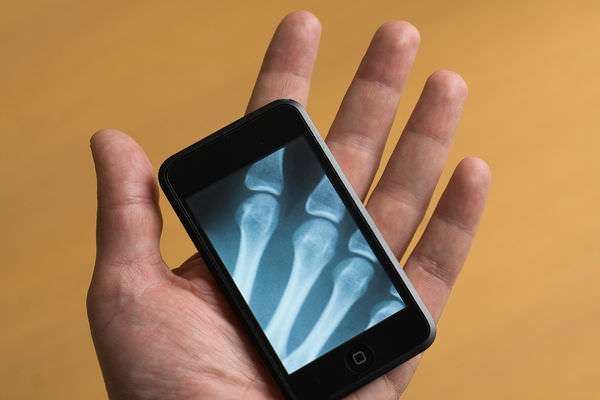FDA Targets Its First Medical App

In 2011, the Food and Drug Agency released proposed guidelines for the regulation of mobile medical apps—health programs for devices like the iPad and iPhone. At the time, there were about 200 million such apps in use, but the FDA said its rules would only pertain to a small segment of the market: apps that, say, controlled blood pressure cuffs or insulin pumps, or that were intended to be used to make clinical decision.
Two years later, those rules still aren't finalized. But the agency has begun questioning one medical app maker. Via Bloomberg News:
An iPhone application that lets users check levels of blood, protein and other substances in their urine is the first target of U.S. regulators seeking boundaries in a burgeoning industry for medical diagnosis on-the-go.
Biosense Technologies Private Ltd.'s uChek system isn't cleared by the Food and Drug Administration and the agency said it wants to know why not, in a first-of-its-kind letter to a maker of a mobile-device application. The app relies on users, such as diabetics checking their glucose, to dip test strips in urine and use the smartphone's camera to allow the system to processes and generate automated results.
One of the big worries with this sort of target was that it could stifle innovation. App makers are going to be less inclined to build medical apps if they're also going to have to deal with a lot of burdensome FDA compliance issues. And uChek, the app in question, seems like it has the potential to be a fairly innovative and useful tool for a lot of people. Basically, the app lets users perform a urinalysis at home. Mashable explained how the app works, and the problems it solves, after Biosense's founder introduced the tech at a TED talk last February:
There are a couple of problems with those commercially available [urinalysis] test strips: They're hard for you to examine on your own, and they consist of 10 confusingly colored pads that intentionally change color a couple of times after you dip them in urine.
What's more, to get a proper read on them, doctors and hospitals have to buy one of six expensive urine-analysis machines — all of which are incompatible with anything but their own brand of urine strips.
Uchek reads the color of those strips the way other apps read barcodes or QR codes. The app asks you to take a couple of shots of the strips at intervals of a few minutes. It then delivers the chemical composition of your pee, what that means, and how it is changing over time.
So, it's an app that provides valuable health status information, without leaving home, and without an expensive medical professional or expensive medical equipment. This seems like the sort of beneficial, efficient health care innovation that we would generally want to encourage. But adding a new layer of FDA regulation is likely to have the opposite effect.
